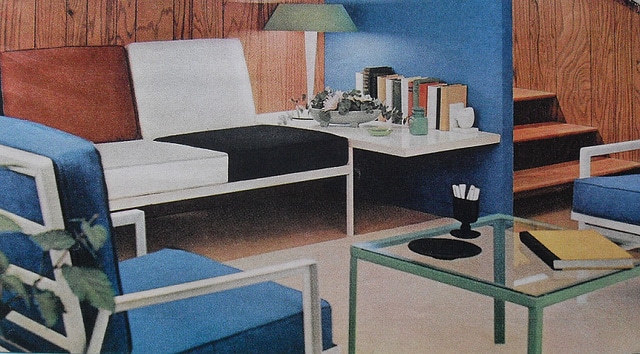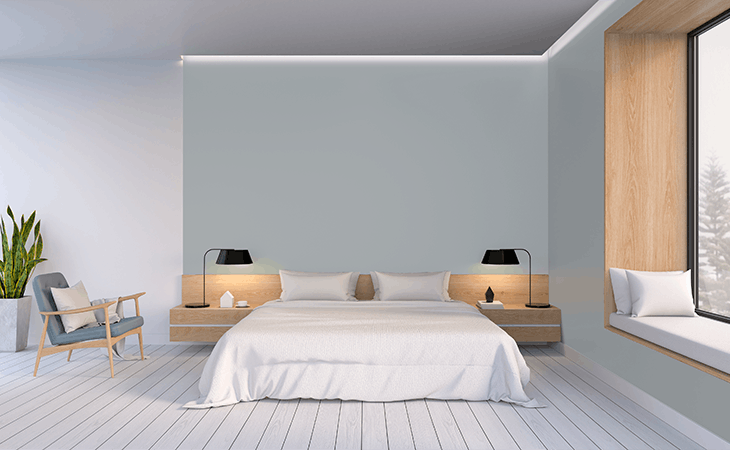The Art of Minimalism: Developing a Well Balanced and Calm Living Setting
The Art of Minimalism: Developing a Well Balanced and Calm Living Setting
Blog Article
Minimalism in Practice: Effective Strategies for Producing a Well Balanced and Intentional Home Environment
The technique of minimalism offers a structured approach to cultivating a home atmosphere that reflects intentionality and equilibrium. By employing strategies such as systematic decluttering and the "one in, one out" policy, individuals can not only reduce excess yet likewise improve their mindfulness pertaining to material properties. In addition, incorporating multi-functional furnishings and on a regular basis reflecting on valuables adds to a space that resonates with personal values. Yet, the journey towards keeping a minimal way of living entails even more than simply these techniques; it elevates important inquiries about exactly how we specify necessity and the function of our surroundings in shaping day-to-day experiences.
Recognizing Minimalism
Minimalism, frequently misunderstood as simple simpleness or a lack of belongings, encompasses an extensive philosophy that urges people to pare down their lives to what truly matters. At its core, minimalism is about willful living, fostering a much deeper connection with oneself and the surrounding environment. This lifestyle advocates for the removal of excess, allowing people to concentrate on crucial values, experiences, and partnerships.
The minimalist method expands beyond physical ownerships; it encourages individuals to analyze their commitments, habits, and mental clutter. By focusing on quality over amount, minimalists seek to create spaceâEUR" both actually and metaphoricallyâEUR" for what genuinely improves their lives. This viewpoint advertises mindfulness, advising individuals to engage in thoughtful decision-making regarding their time, sources, and power.
Comprehending minimalism requires a gratitude of its transformative possibility. It is not just a fad but a purposeful option to embrace simplicity and quality. Via this lens, people can grow an extra purposeful presence, bring about improved wellness and fulfillment. Ultimately, minimalism offers as a path to greater satisfaction, motivating people to align their lives with their core worths and ambitions.
Decluttering Your Space
A chaotic setting can significantly influence psychological quality and total health. To cultivate a peaceful and organized home, it is important to participate in a comprehensive decluttering process. Begin by assessing each room methodically, determining things that no more offer a purpose in your life or align with your values. This procedure calls for honesty and discernment.
Tackle one area at a time to prevent feeling overwhelmed. Beginning with smaller areas, such as a drawer or an edge of an area, and gradually development to larger locations. As you arrange with belongings, classify things right into 3 teams: maintain, donate, and throw out. This technique not just simplifies decision-making yet also streamlines the decluttering procedure. Minimalism.
Incorporate a timeline for your decluttering efforts to maintain momentum. Set attainable goals, such as committing 15 minutes day-to-day to the task. When finished, consider implementing a "one in, one out" policy to avoid future buildup. By establishing a conscious approach to your possessions, you create a more intentional space that cultivates clarity and improves your general lifestyle. Embrace the flexibility that comes with a decluttered home, allowing for a more harmonious existence.
Curating Your Possessions
Curating your valuables includes a deliberate and thoughtful approach to what you pick to maintain in your life. This process starts by examining each item based on its energy, nostalgic worth, and visual allure. By asking critical questionsâEUR" such as whether an item serves a function or brings you joyâEUR" you can make my company educated decisions concerning what truly is worthy of a place in your home.
To efficiently curate your items, think about producing categories. Team things by feature, sentiment, or regularity of use, which can assist clarify their functions in your life. This approach not just simplifies the selection process yet likewise promotes a deeper admiration for the personal belongings you select to keep.
Once you have actually identified your most valued products, focus on presenting them in a manner that enhances their significance. Thoughtful arrangement can transform everyday items right into meaningful centerpieces, adding to a serene and willful setting.
Ultimately, the objective of curating your personal belongings is to cultivate an area that shows your values and way of life. By focusing on quality over quantity, you develop an unified ambience that promotes mindfulness and well-being in your home.
Designing for Performance
Designing for capability requires a keen understanding of how room and objects interact within your home. Each thing should serve an objective, improving not just the aesthetic top quality of the setting however likewise its usability. Begin by assessing the primary features of each area. As an example, the kitchen area should promote food preparation and meal preparation, while the living-room must promote relaxation and social interaction.

Think about the circulation of movement within each area, permitting natural shifts between areas. This can be achieved via open designs or strategically put furniture that encourages circulation.
Utilizing vertical area can additionally improve functionality; install shelves or wall-mounted storage to keep floors clear. Stress the relevance of illumination, as it can dramatically affect exactly how practical a space feels. By prioritizing utility and simplicity, you can produce an unified living environment that supports both daily tasks and individual health.
Keeping a Minimalist Lifestyle
Creating a useful space is just the very first step toward embracing a minimalist way of life; the challenge lies in keeping that simplicity over time. Taking on the "one in, one out" policy can successfully avoid buildup; for every brand-new item introduced, an existing one should be useful link gotten rid of.
One more critical aspect is mindfulness in consumption. Being intentional regarding purchases assists avoid impulse purchases that can mess both physical and mental area. When buying, think about whether an item adds authentic worth to your life or aligns with your minimal objectives.

Lastly, develop a supportive environment by surrounding yourself with like-minded individuals who value minimalism (Minimalism). Participating in conversations or taking part in minimalist neighborhoods can offer inspiration and responsibility, making sure that simplicity remains a core principle in your everyday life
Verdict
Finally, the technique of minimalism fosters a intentional and well balanced home environment with systematic decluttering, thoughtful curation of valuables, and the prioritization of functionality in layout. By embracing strategies such as the "one in, one out" rule and engaging with encouraging areas, individuals can sustain a minimal lifestyle. This approach not just decreases excess yet additionally boosts mindfulness, eventually adding to an extra meaningful and deliberate living experience.
Integrating multi-functional furnishings and consistently reflecting on items adds to a space that resonates with personal values. By developing a conscious approach to your ownerships, you develop an even more deliberate living space that fosters clearness and improves your overall top quality of life.Designing for performance needs a keen understanding of exactly how room and objects connect within your home.Creating a practical area is just the very first action toward welcoming a minimal lifestyle; the challenge lies in maintaining that simplicity over time. Being intentional about acquisitions aids prevent impulse purchases that can clutter both mental and physical area.
Report this page